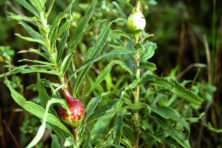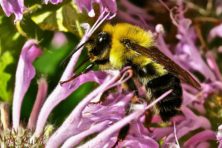The Grooming Habits of Insects
- Share
- Tweet
- Pin
- Share
• Humans have lived in Siberia for thousands of years, and a recent study discovered that three of their genes served them well in surviving cold conditions. Researchers analyzed 200 DNA samples from 10 indigenous Siberian groups. One gene, called UCP1, enhances the conversion of fat directly into heat to warm the body. Another, called ENPP7, appears to enhance the metabolism of fats from meat and dairy products. A third, PRKG1, plays a role in accelerating contraction of smooth muscles responsible for shivering; the gene also influences constriction of blood vessels beneath the skin to minimize heat loss. (Science, Feb. 1, 2013)
• Drinking several cups of coffee every day may increase your life span. A study of the coffee-drinking habits of 400,000 people was conducted. An analysis of the results showed that those who drank two or more cups of coffee per day were 10-16 percent less likely to die from heart disease, lung disease and infections. Consumption of decaffeinated coffee conferred the same benefits, so it appears that caffeine may not play a big role. The possible mechanisms involved are still unknown. Whether drinking tea has a similar effect is unclear, but it is likely that this beverage has a similar protective effect. (Science News, June 30, 2012)
• Cockroaches are not known for taking baths, but they are fastidious about keeping their long antennae clean. The antennae of insects represent their noses, for they contain tiny openings that permit odor molecules to enter and activate neurons. This is called chemoreception, and our noses function in much the same way. Smell (or olfactory) neurons transmit signals to the cockroach brain, which then interprets the odor, perhaps deciding whether the odor represents food or non-food. The length and structure of an insect’s antennae tell us how much the species depends on its sense of smell. Their long antennae mean that smell is extremely important to cockroaches. A shiny, waxy buildup periodically occurs on their antennae and clogs tiny pores that lead to odor-sensing cells. Measurements of the electrical activity inside their antennae indicate that this buildup interferes with their sense of smell.
The cockroach deals with this by “grooming,” a procedure involving grabbing one of the two antennae with a front leg and drawing the antenna through its mouth – this scrubs off the gunk on its antenna. Other insects such as carpenter ants and houseflies also groom.
If the length or structure of an insect’s antennae indicates how much it depends on sensing odors, then dragonflies, which have tiny antennae, must not have a great sense of smell. In fact, they do not, for their survival depends on their huge eyes, and they regularly use their spiny legs to reach up and wipe their eyes, clearing them of moisture and debris. (Proc. of the National Acad. of Sciences, Feb. 4; personal and other sources)
• Neurons in the base of the antennae of migrating monarch butterflies play a prominent role in providing the timing and direction of their migration. This is known as the “time-compensated sun compass” mechanism. (Science, Sept. 25, 2009)


